Testing The Limits Of Civil Obedience: An Experiment
Yesterday, while folks in the Southeast were getting hammered with their second severe winter storm in two weeks, the skies over Buffalo were wonderfully bright and sunny. Of course, when you count the wind chill factor, the temperature barely climbed into the double digits but as a result of the sun and a whole lot of road salt, the highways here were mostly bare and dry. That means my evening commute was a breeze. I hit Route 33 and ran my little CUV up to just over the 55 mph limit and sailed right out of town. Things were going great, but then, unexpectedly, traffic began to slow.
I shifted left into a place I really don’t run that much these days and wicked the speed up to a smidge over 60 in order to keep up the pace. I found myself fourth or fifth back in a line of cars that was whizzing up the fast lane overtaking car after car and, as a student of the road, I began to wonder just what the hell was holding all these people up. I found the reason at the head of the line, a Buffalo City Police cruiser running right at the limit and, like all the good people of the Earth who don’t want a senseless speeding ticket, I found myself easing off the gas. But as I noted his lack of response to all of the cars ahead of me that were simply accelerating away into the wide open space the officer had created, I decided that for whatever reason he simply wasn’t interested in writing tickets and so I continued on, barely adjusting my pace.
Always on the lookout for something that will make a meatier TTAC article than my usual shtick of old time reminiscences, I came home and spent some time on the computer looking at traffic patterns and wondering just how these rolling roadblocks affect the flow of traffic. What, I asked myself, is the point of setting a speed limit that is so low that people simply disobey it as a matter of course? Virtually everyone, I found, pushes the limit and. unless an officer is looking for an excuse to stop a suspicious vehicle, the least of these transgressions are simply ignored and so we receive a sort of tacit approval to speed. Knowing how fast to go can be a problem, however, but most people are pretty good at judging the speeds of the cars around us and we usually just fall into line and run with the crowd. When that happens, people who follow the strict letter of the law become road hazards.
In 2006, a group of Georgia college students decided to point out the absurdity of the 55 mph speed limit by getting in their cars, lining up next to one another on the interstate and then actually following the rules as they drove around the city of Atlanta. Their Youtube video “A Meditation on the Speed Limit” explains the genesis of their plan and gives us the opportunity to observe first hand as we ride along during their daring act of “civil obedience.” It’s like most amateur videos, shaky, poorly framed and without enough shots of the girls, but its an interesting watch. If you are in a place where you can’t actually view the video now, just know that the beginning has several young people railing about the speed limit and talking about their plan, the middle cuts to the car where we see the kids annoying a whole lot of people and nearly causing an accident as they proceed to back up traffic for miles and miles and then ends with them talking about how great their plan was and how they proved the absurdity of the speed limit.
What grabbed my attention were the reactions of the other drivers around them. We all know the law, American roads generally have signs telling us the limit every few miles, but every driver also understands the unwritten rules of the road that tell us we can exceed that limit in a reasonable way so long as everyone else on the road is running somewhere around that same speed. It is a social norm and, when faced with the rolling road block, the social contract we have with other drivers broke down. People were outraged and they started doing anything they could to break through. They even got downright dangerous at times, a couple of people going so far as to use the breakdown lane to make high speed passes!
Writing this now, had I been driving one of the cars stuck behind them, I’m not sure how I would have responded . I would like to think that I would have enough sense not to make a dangerous and illegal pass, but I probably would have followed too closely, hit the headlights, blared the horn and eventually made some pretty threatening gestures after the blockade ended and the kids were busy patting themselves on the back. This kind of thing really makes me angry. We may be a nation of laws but we are a society of norms and whenever the two clash people can get seriously hurt. It is generally accepted that we get at least 5 to 10 mph over in most cases and we damn well better get it.
The strange thing is that I could find no proof that anyone involved in this stunt was ever punished. I found contradictory statements in the press from Georgia State Police officials who said that it was against the law to block the fast lanes, but that the kids did nothing wrong because they were running at the posted speed limit. I expect similar confusion when we hit the point where our in-car technology is used to report speeding violations or to assess us fines. It will be interesting to see if the government continues to allow us the traditional few over or whether they decide to turn this into a cash-cow and get people for every little infraction. The lure of easy money is there and if the whole traffic camera fight is any indication, some municipalities will take the bait. If people react to that intrusion into their daily lives the way they acted towards these kids’ silly experiment, you can expect a revolution. Let’s just hope it happens in the voting booth.
Thomas Kreutzer currently lives in Buffalo, New York with his wife and three children but has spent most of his adult life overseas. He has lived in Japan for 9 years, Jamaica for 2 and spent almost 5 years as a US Merchant Mariner serving primarily in the Pacific. A long time auto and motorcycle enthusiast he has pursued his hobbies whenever possible. He also enjoys writing and public speaking where, according to his wife, his favorite subject is himself.
More by Thomas Kreutzer
Latest Car Reviews
Read moreLatest Product Reviews
Read moreRecent Comments
- Kwik_Shift_Pro4X I wonder if Fiat would pull off old world Italian charm full of well intentioned stereotypes.
- Chelsea I actually used to work for this guy
- SaulTigh Saw my first Cybertruck last weekend. Looked like a kit car...not an even panel to be seen.
- GregLocock Bear in mind this is purely a branding exercise and has no significant input from AM. Buying one of these is like buying a Pink Floyd T shirt, no Dave and Nick didn't personally sew it up for you.
- Lou_BC This is the sort of thing that lands 15 billion dollar Honda investments in Canada. One political party tries to undo everything the other one has done.




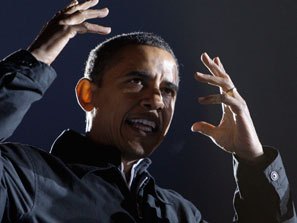












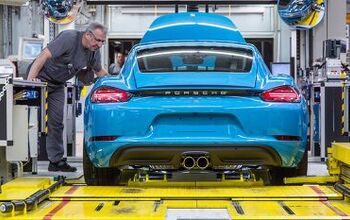









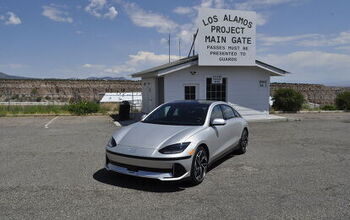
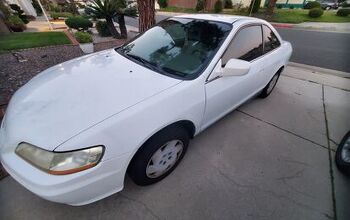
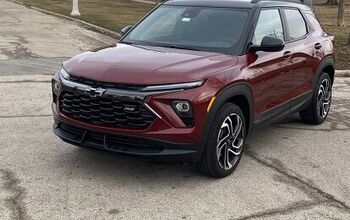

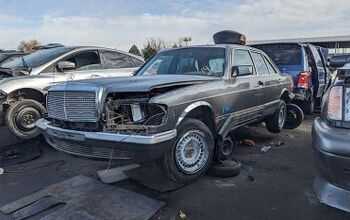



Comments
Join the conversation
One notices when crusing long term at high speeds @ 130+mph, people tend to drive in groups like bees. You pass several groups of cars going in similar speed. For ex one group would go a steady 70mph, next group would be doing 80mph, sometimes temporarily i would even form a group crusing 90-95mph. I bet people who have cross countried agree to noticing something similiar.
If it's about revenue, just raise speed limits and charge everyone an annual driving fee. You could even make it a graduated system where people would pay more to be able to speed more. That's basically what it is now. I'd gladly pay ~$200-300 a year to demonstrate that I can "speed safely" and be allowed the right to do so. That would generate way more revenue and be less of a pain in the ass